TESTED: Shimano’s New GRX Groupset
Shimano just dropped updated versions of its GRX gravel groupsets, and here's how that actually ride. HINT: mechanical for the win!
New GRX is completely adequate.
I don’t mean that disparagingly or say it in a sarcastic tone. GRX’s adequacy isn’t bad—The group will work well for most of its intended user groups. If it is anything akin to Shimano’s 12-speed mountain bike groups and prior-generation GRX, the new GRX will be a workhorse.
Shimano didn’t disappoint me with its latest gravel group. It also didn’t blow me away. After digesting the typical media info and press releases, GRX left me wondering, “What next?” more than anything else. That’s because Shimano slipped an even bigger revelation in with this new group’s launch. And after riding the new GRX, the group also had me asking, “What if?”
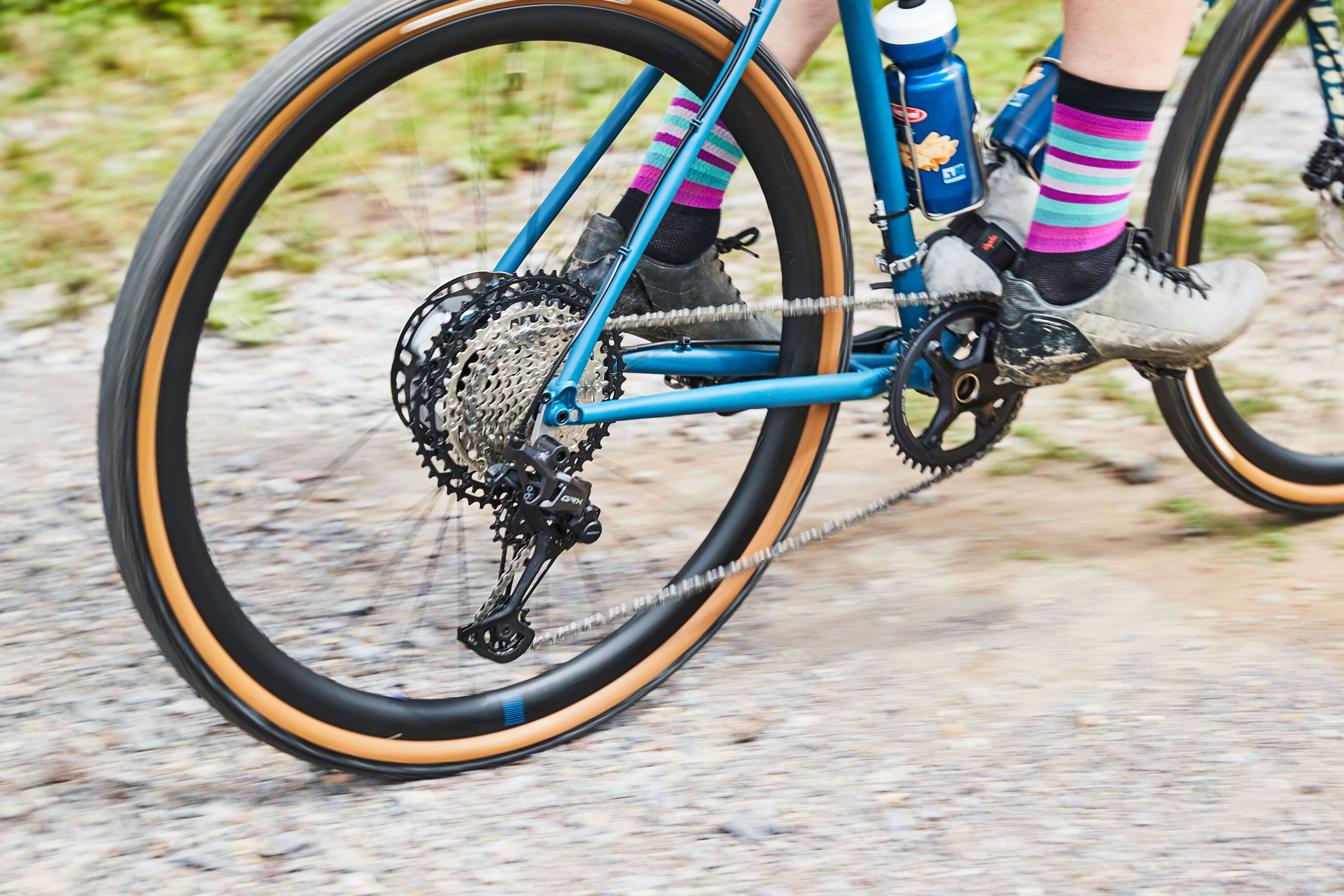 Gravel riding evolved over the four years since Shimano introduced its first take on GRX. This second-generation GRX is more a refinement than a full-scale shift for the category. Overall, most of the updates are smart and tuned in to the changing needs of the gravel market.
Gravel riding evolved over the four years since Shimano introduced its first take on GRX. This second-generation GRX is more a refinement than a full-scale shift for the category. Overall, most of the updates are smart and tuned in to the changing needs of the gravel market.
Performance-wise, GRX is, very honestly, much better than adequate. This group is probably the best mechanical-shifting drop bar ensemble that Shimano has ever put to market. The GRX rear derailleur effortlessly fires off crisp shifts up and down the cassette, and the system shifts as easily under power on double-digit grade climbs as when humming down a fire road at full clip. Plus, it comes in options to suit many styles of (gravel) rider. Oh, and the brakes have plenty of power and good modulation.
Yet this all will soon be overshadowed by GRX Di2.
In an unusual move, the typically tight-lipped Shimano revealed the electronic group was coming in the last slide of the mechanical GRX media presentation. When questioned about dates or details on the Di2 variant(s), a U.S. media representative for the brand would not comment.
However, a knowledgeable contact at a global bicycle company told Bicycling that Shimano originally planned to launch GRX Di2 with a “6-month delay from mechanical,” but that date “keeps getting pushed”.
 After spending significant time riding the Shimano’s superb 12-speed Ultegra Di2 group over the past year (and having now ridden the new 12-speed GRX mechanical), I long for the forthcoming GRX Di2 and its undoubtedly impeccable shifting.
After spending significant time riding the Shimano’s superb 12-speed Ultegra Di2 group over the past year (and having now ridden the new 12-speed GRX mechanical), I long for the forthcoming GRX Di2 and its undoubtedly impeccable shifting.
While it could be a long winter waiting for the release date, features, and pricing information of GRX Di2, it seems shortsighted to upgrade a bike to GRX 12-speed mechanical now—or buy a new gravel bike equipped with 12-speed GRX mechanical—knowing 12-speed GRX Di2 is on the horizon.
Unless you are one of the numerous (and vocal) mechanical shifting devotees—Let’s not overlook that modern mechanical shifting technology is incredibly good. The cycling press and bicycle brands often forget to tell bike buyers that side of the story, because electronic drivetrain performance is also extremely good (and who doesn’t like the appeal of beep-boop tech sometimes?). On top of that, more and more modern bikes are being made as only being compatible with electronic drivetrains.
But, as the new GRX demonstrates, it is still possible to improve and refine the performance of mechanical shifting. Shimano’s decades of experience honing its mechanical shifting and melding learnings from road, mountain, and gravel help make the new GRX’s shifting performance among the best available.
Around kilometre 40 of my first ride on the 12-speed GRX mechanical, I realised that this group—and the 105 12-speed mechanical group debuting today also, though we’ve known about it for nine months—is probably the last high-end mechanical-shifting drivetrain Shimano will ever develop.
And as I soft-pedalled along, I reminisced about previous generations of Shimano mechanical shifting drivetrains I owned over the decades—from 8-speed 600-series STI, Ultegra 6600, and R8000 on the road to M900 XTR, M770 Deore XT, both generations of Saint, and the latest 1x 12-speed XTR for mountain bikes—and the wonderful rides I experienced with those groups on my bikes.
New GRX’s overall smoothness and shifting precision also left me pondering what could have been if Shimano continued developing mechanical drivetrains for road-riding applications. 12-speed Dura-Ace and Ultegra Di2 shift quality is amazing—it’s pretty much unrivaled by any groupset. But GRX’s 12-speed mechanical shifts feel pretty danged close to Di2—Could Shimano have made the shifting performance of a 12-speed mechanical Dura-Ace or Ultegra even closer to the Di2 version?
However, unless something changes, Shimano’s—and SRAM’s, and Campagnolo’s—path forward is electronic. And this GRX seems almost like a swan song for Shimano’s high-performance drop-bar mechanical shifting.
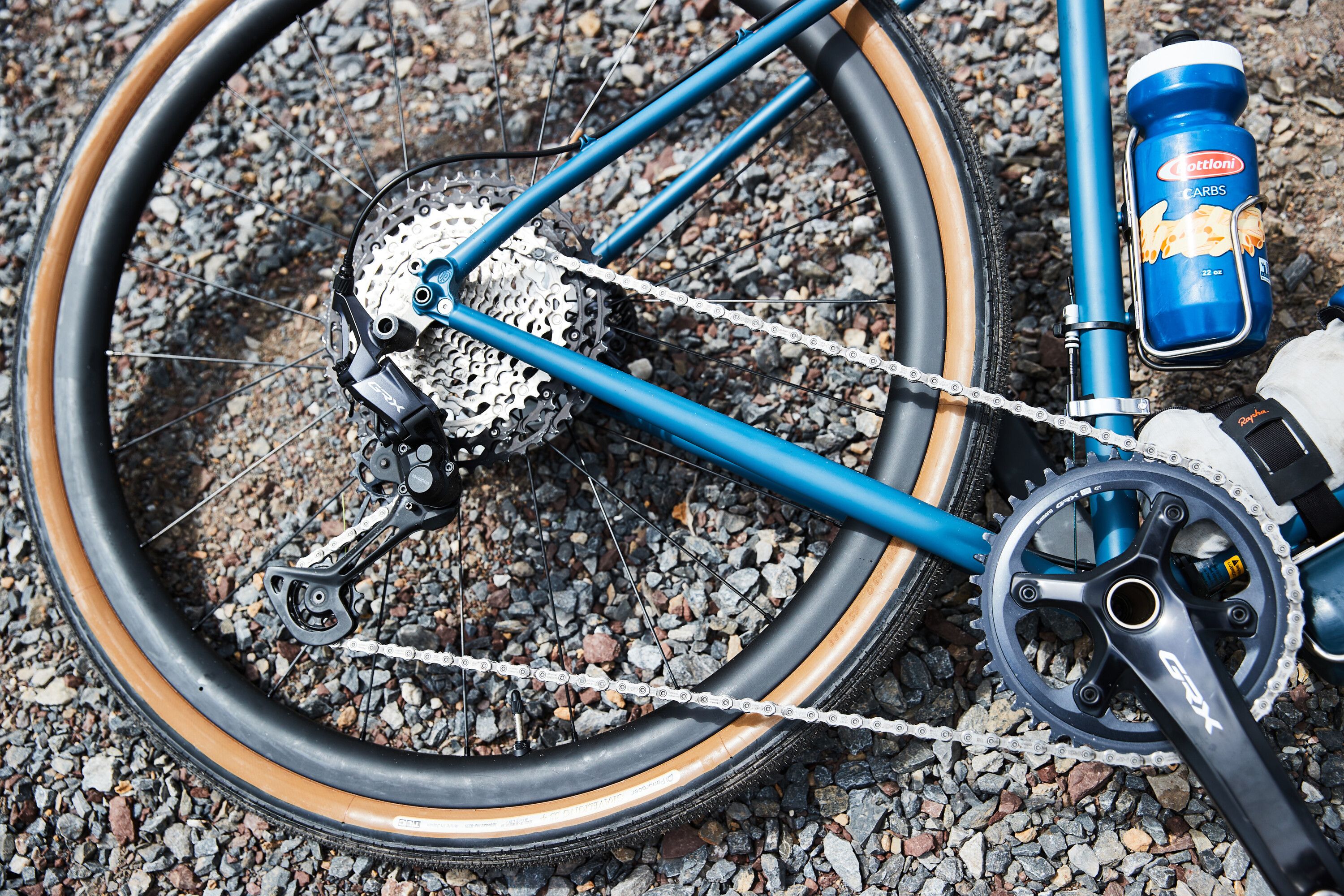 But it’s a hell of a tune. This new mechanical GRX meets or exceeds the riding needs of a large population of cyclists—all without the need to charge batteries, fuss with software updates, or accidentally get the derailleur stuck in safe mode. I suspect (and secretly hope) that many road riders will cob together combos of GRX 2x 12-speed mechanical shifters, GRX 2x rear derailleur, new 12-speed 105 mechanical front derailleur, and Ultegra or Dura-Ace cranks to make “new” mechanical-shifting groupsets.
But it’s a hell of a tune. This new mechanical GRX meets or exceeds the riding needs of a large population of cyclists—all without the need to charge batteries, fuss with software updates, or accidentally get the derailleur stuck in safe mode. I suspect (and secretly hope) that many road riders will cob together combos of GRX 2x 12-speed mechanical shifters, GRX 2x rear derailleur, new 12-speed 105 mechanical front derailleur, and Ultegra or Dura-Ace cranks to make “new” mechanical-shifting groupsets.
If this is the last stop on the line for Shimano’s cable-actuated shifting systems, it’s a sad ending. Shimano’s mechanical drivetrains deserve a larger-scale and higher-profile send-off than simply fading away.
Options Aplenty
Shimano offers GRX in two flavors—single chainring (1x) or double (2x)—and two (really 1.5) price tiers—RX-820 and RX-610.
If you’re purchasing your groupset aftermarket to upgrade a bike you own or are assembling something new, choose wisely and consider your needs and riding before laying down your cash. Some of this can be confusing if you are unfamiliar with bicycle components, specifically with Shimano component compatibility. It’s spendy to switch from 1x to 2x or vice versa; many GRX parts are not cross-compatible between chainring configurations.
Shimano offers GRX at two levels for the crank and shifter/brake levers. These are dubbed RX-820 for the higher-end products and a lower-priced RX-610 series. The derailleurs are the same level, RX-820 (for 2x drivetrains) and RX-822 (for 1x). Cassettes and chains are borrowed from Shimano’s existing mountain and road 12-speed selections.
1x Options and Ride Evaluation
The use of single-chainring drivetrains continues to grow on the dropbar side of riding, especially in gravel. An increasing number of frames only fit 1x as brands fit wider tires, suspension, and dropper seatposts onto their gravel bikes. With wide-range 12-speed cassettes, finding a gear ratio that meets your riding needs is much easier than with 10- or 11-speed systems.
Within Shimano’s GRX 1x offerings, there are choices for left-side lever type (with or without dropper seatpost compatibility), chainring size (40-tooth or 42T), and rear derailleur cage length (GS for 10-45T cassettes and SGS for 10-51T). And except for the elite-level racers (who might want a larger-size chainring) or offroad bikepackers (who might need a smaller ring for climbs), the available gearing should work for most riders.
Levers: Shimano offers dropper-compatible (RX-820 level only) and brake-only (RX-820 & RX-610 levels) left-side levers. Right-side levers are 12-speed mechanical shifting (also used on the 2x system). Both level levers are only compatible with Shimano’s hydraulic brakes.
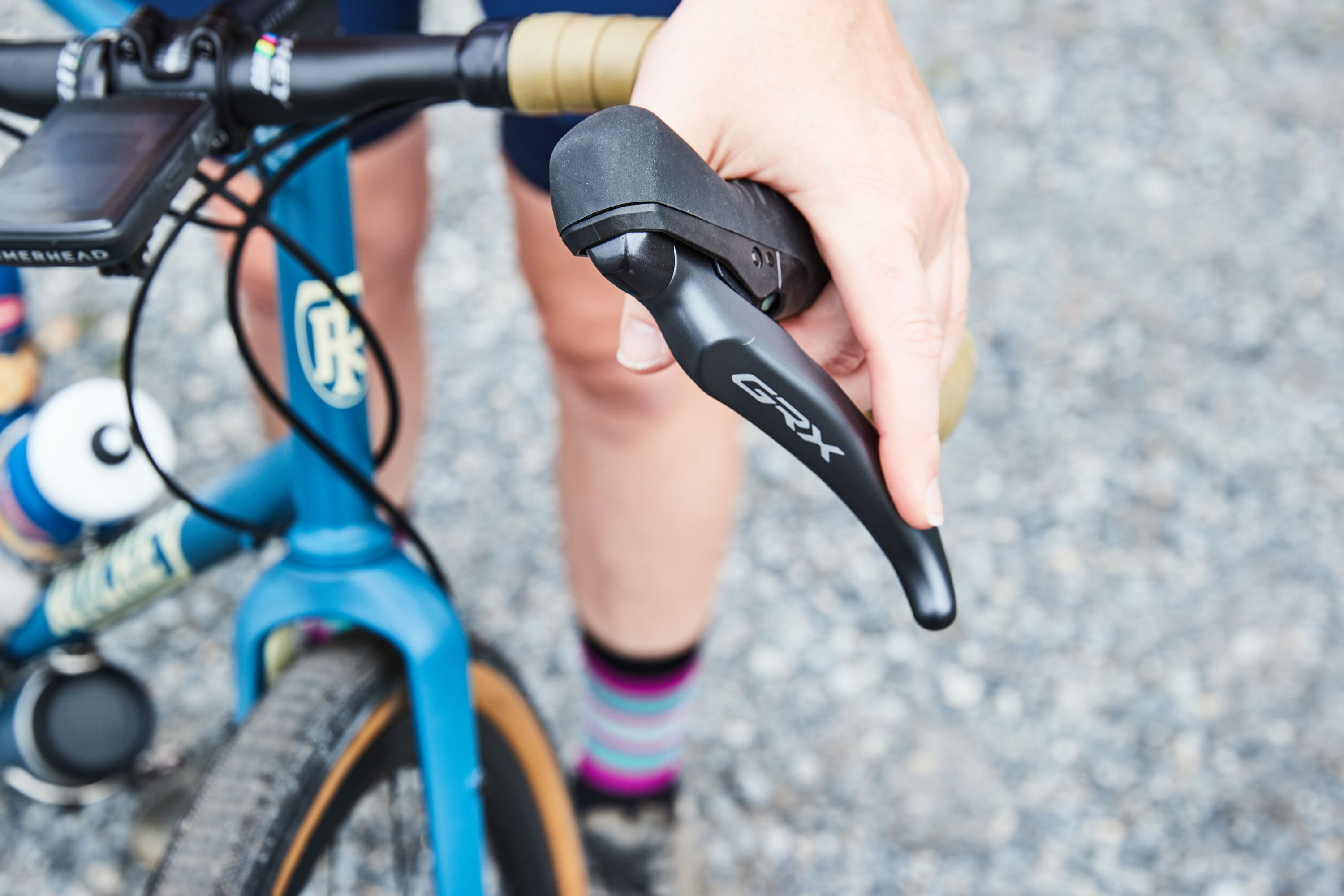 The 820 levers have a slightly revised shape (to mate better with flared bars), updated hoods with changed texture, and Shimano‘s Servo Wave braking. The 610 levers only receive the updated hoods.
The 820 levers have a slightly revised shape (to mate better with flared bars), updated hoods with changed texture, and Shimano‘s Servo Wave braking. The 610 levers only receive the updated hoods.
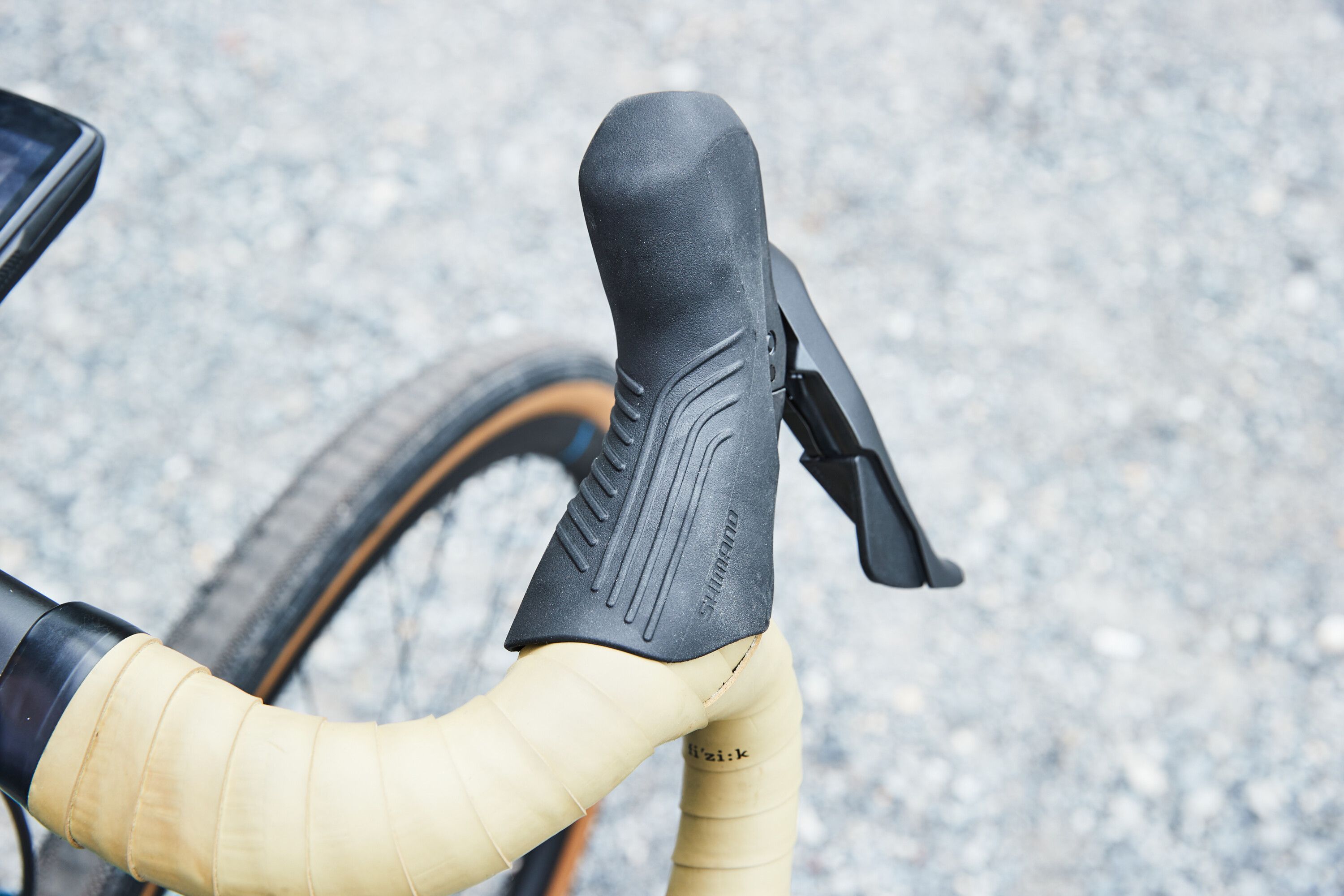 We sampled the RX-820 levers in 1x dropper configuration on our test bike. The updated flare shape has a cleaner aesthetic and feels more natural in the hand. Shimano claims the shape helps relieve pressure in the rider’s palms. I did not see a noticeable change in how my hands felt (with and without gloves), but your mileage may vary on this feature. I did feel that the lever shape and size allowed me to rest the heels of my hand and wrists on the bar top when riding better than the 12-speed SRAM AXS or Shimano Di2 levers I have used.
We sampled the RX-820 levers in 1x dropper configuration on our test bike. The updated flare shape has a cleaner aesthetic and feels more natural in the hand. Shimano claims the shape helps relieve pressure in the rider’s palms. I did not see a noticeable change in how my hands felt (with and without gloves), but your mileage may vary on this feature. I did feel that the lever shape and size allowed me to rest the heels of my hand and wrists on the bar top when riding better than the 12-speed SRAM AXS or Shimano Di2 levers I have used.
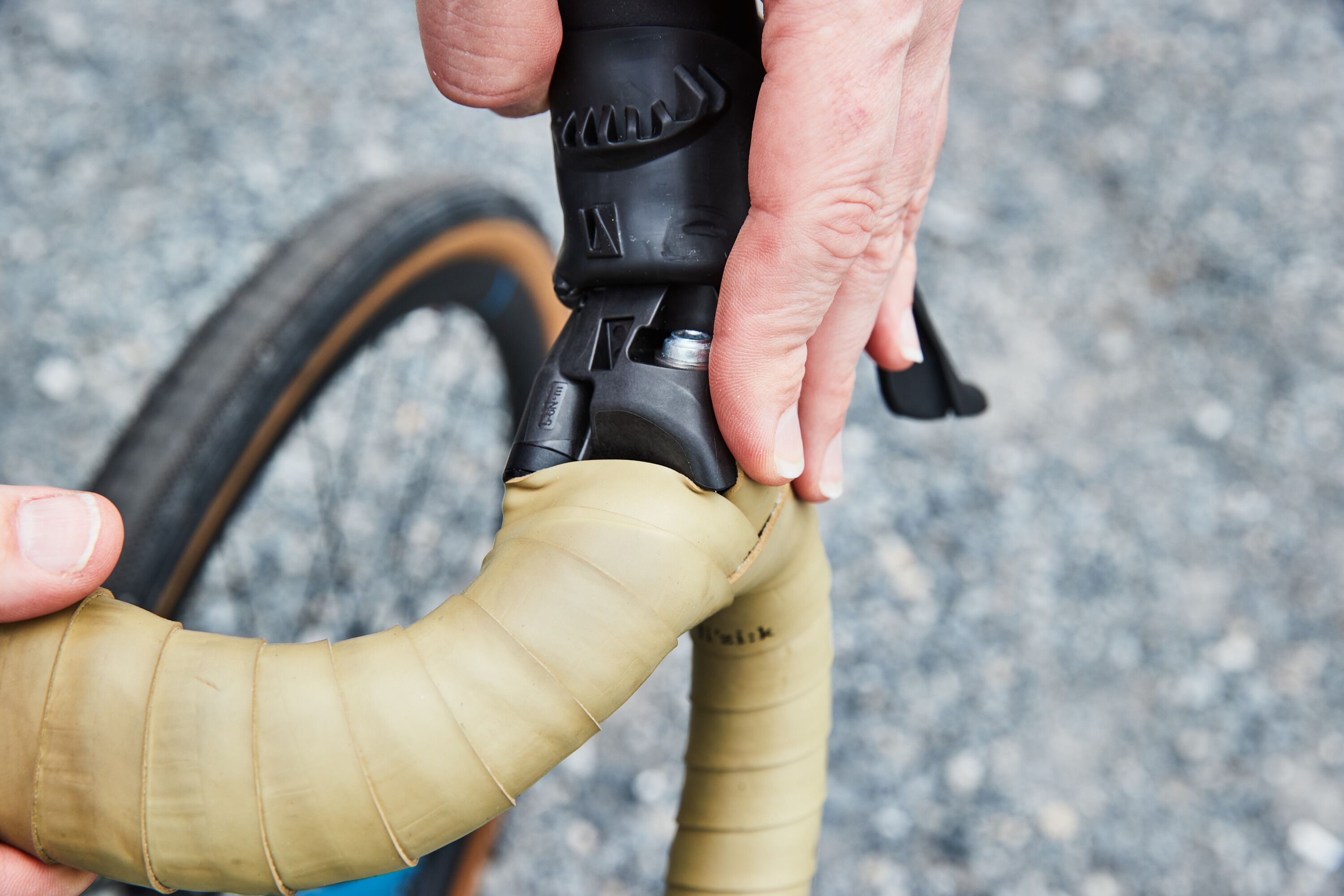 Both levers (left and right) experienced slight buzzing and rattling when my hands were on the tops of the bars. While it was a slight annoyance, the levers were functionally fine. Of similar annoyance, the brake hood on our right-side lever wouldn’t stay hooked to the clips on the lever.
Both levers (left and right) experienced slight buzzing and rattling when my hands were on the tops of the bars. While it was a slight annoyance, the levers were functionally fine. Of similar annoyance, the brake hood on our right-side lever wouldn’t stay hooked to the clips on the lever.
Crank: 40T and 42T chainrings are offered on 170mm, 172.5mm, and 175mm at the RX-820 and RX-610 levels. We used the 42T ring on 175mm 820 arms. With the 42T x 10T largest gear, I felt slightly under-geared on long, flat sections of paved road. If you exclusively ride road (or live somewhere pancake flat), you might want to look into larger-sized aftermarket chainring options for this crank.
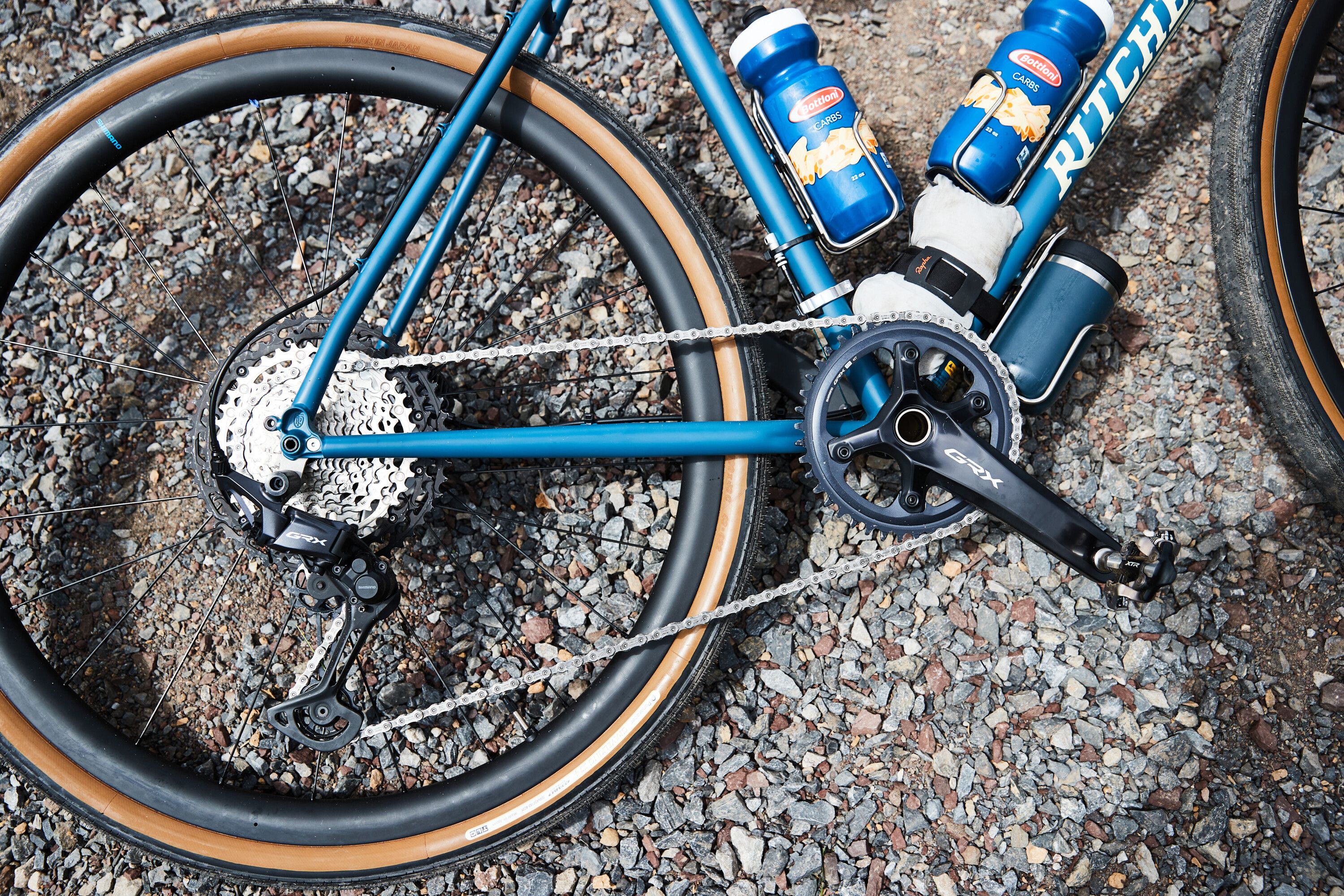 Rear Derailleurs: There are two new 1x-specific RDs. They differ only in cage length. The RX-822-GS is for 10-45T rear cassettes, and the RX-822-SGS works with 10-51T. All derailleur variants have an adjustable clutch mechanism to help secure the chain over rough terrain. We used the SGS variant with a 10-51T Deore XT cassette on our setup without complaints or problems.
Rear Derailleurs: There are two new 1x-specific RDs. They differ only in cage length. The RX-822-GS is for 10-45T rear cassettes, and the RX-822-SGS works with 10-51T. All derailleur variants have an adjustable clutch mechanism to help secure the chain over rough terrain. We used the SGS variant with a 10-51T Deore XT cassette on our setup without complaints or problems.
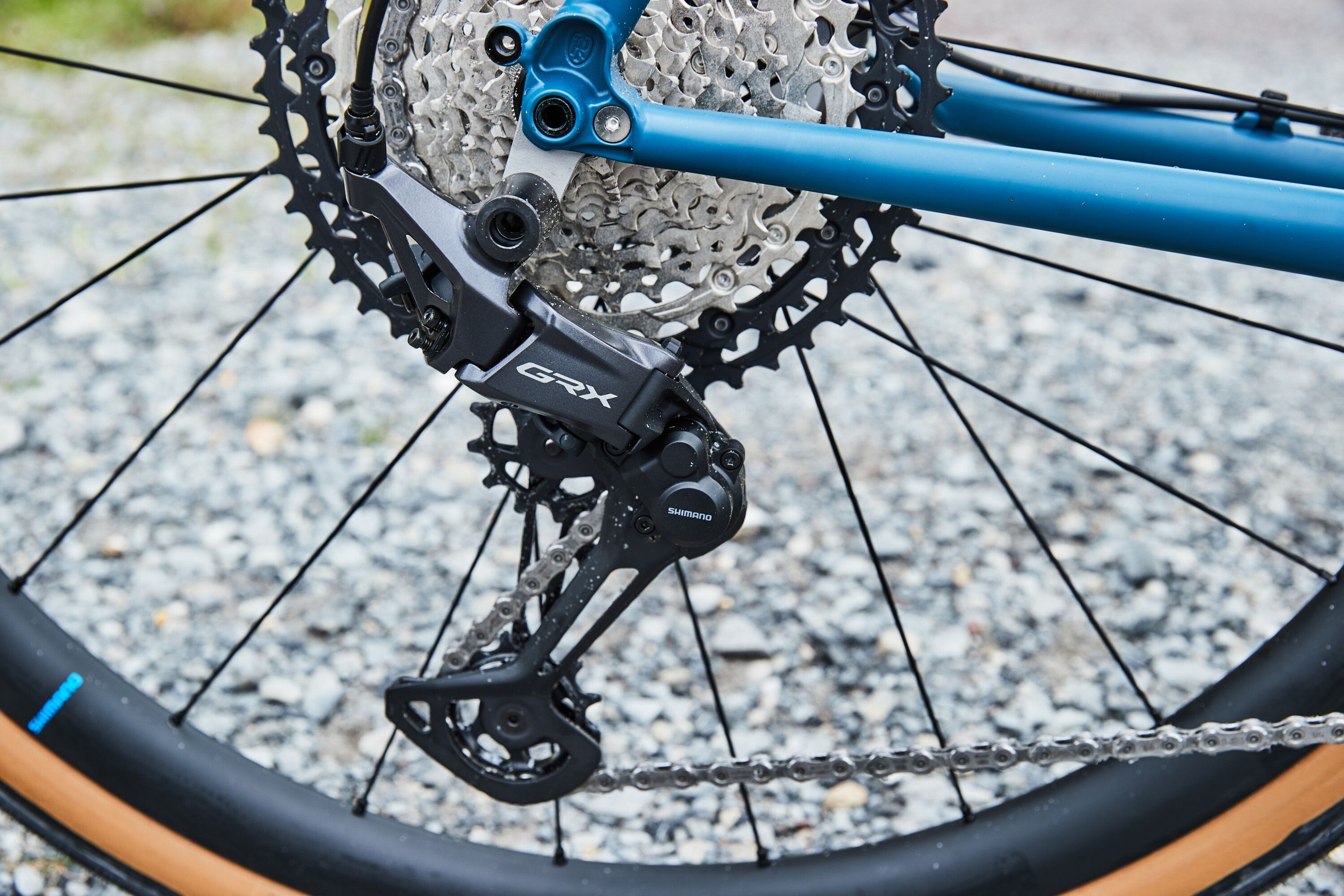 MicroSpline: The cassettes used for GRX 1x groups are the existing 12-speed XTR, XT, SLX, and Deore mountain bike offerings. While this makes it easier to find cassettes at local shops (and allows riders to upgrade/downgrade their cassette as their budget dictates), these cassettes use Shimano’s MicroSpline driver—Not HG, not HD or HD-R.
MicroSpline: The cassettes used for GRX 1x groups are the existing 12-speed XTR, XT, SLX, and Deore mountain bike offerings. While this makes it easier to find cassettes at local shops (and allows riders to upgrade/downgrade their cassette as their budget dictates), these cassettes use Shimano’s MicroSpline driver—Not HG, not HD or HD-R.
Unfortunately, there is not a 12-speed, Shimano mountain bike cassette compatible with HG-freehub bodies. So, if you plan to use your existing gravel or road wheels with Shimano 10-45T or 10-51T cassettes, be sure the wheel brand offers a MicroSpline-free body.
If you can’t get a MicroSpline body for your wheels, or if you just want to use your existing wheelsets, there are options out there. SunRace, for example, makes an HG-compatible 12-speed 11-51T cassette.
2x Options
We received only the 1x, dropper-post compatible, SGS cage groupset for riding evaluation before the GRX launch. Shimano is sending a 2x group our way shortly, and we plan to compare the two groups head-to-head.
Levers: A 2x-compatible left-side lever compliments the same right-side 12-speed GRX lever shared with the 1x group.
Derailleurs: There is a 2x-specific rear derailleur compatible with 11-34T and 11-36T 12-speed cassettes. The GRX 12-speed front derailleur is also new.
Cassette: While the new 12-speed 1x GRX requires MicroSpline, 2x GRX uses existing HyperGlide-compatible 12-speed 11-34T road and 11-36T cassettes.
What‘s Missing?
Something not found in the group is flat bar shifter or brake lever options. For gravel racers and core gravel enthusiasts, this might not seem like a big deal, but many riders want these for their riding. When I most recently worked at a shop, this was a common switch for riders who wanted to use a gravel bike for commuting or preferred the upright position offered by a flat bar. Plus, some riders have mobility issues that limit their use of drop bars.
Unfortunately, due to cable pull differences between road and mountain bike drivetrains, riders cannot simply swap in a Shimano 12-speed mountain bike shifter. Hopefully, Shimano sees this need in the market and addresses it.
GRX Groupset On-Sale, Weights
Shimano states the new GRX parts should land in SA bike shops towards the end of 2023. These weights include crank, chainring, derailleur, cassette, levers, front & rear brakes, rotors, and chain (with options to run a dropper or 2x system where applicable).
1x: Dropper Seatpost Lever Option
- w/ 10-45T: Weight: 2,888.5 grams (claimed)
- w/ 10-51T: 2 899g* (claimed)
(* This configuration weighed 2 838g on our shop scale.)
1x: Non-Dropper Option
- w/ 10-45T: 2 822.2g (claimed)
- w/ 10-51T: 2 833.2g (claimed)
2x:
- 48/31T with 11-36T: 2 961.5g (claimed)
READ MORE ON: gravel bikes grx new products product launch shimano GRX tested



